
Station Name: LUSTLEIGH[Source: Dave Holman]
Lustleigh Station: Gallery 1 - Early 20th C - April 1957
old4.jpg) Lustleigh Station looking south in the early 20th century. A wide strip of land was purchaed for use as a loop line but this was never used for a loop and the land was use for a station garden.
Copyright photo from John Alsop collection 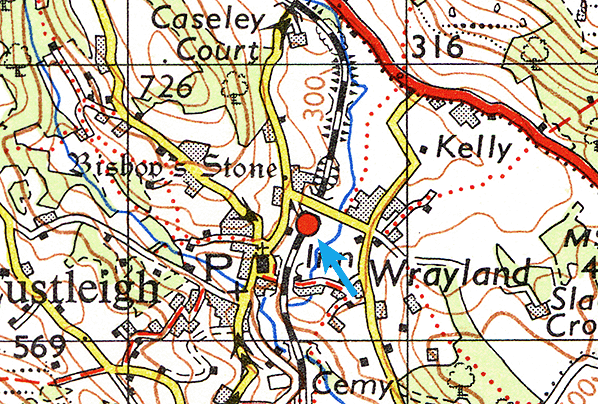 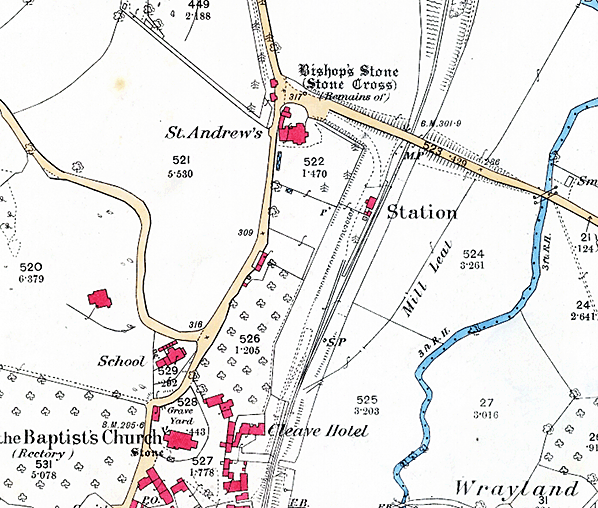 1886 1:2,500 OS map showing the layout of Lustleigh station and goods yard as built.
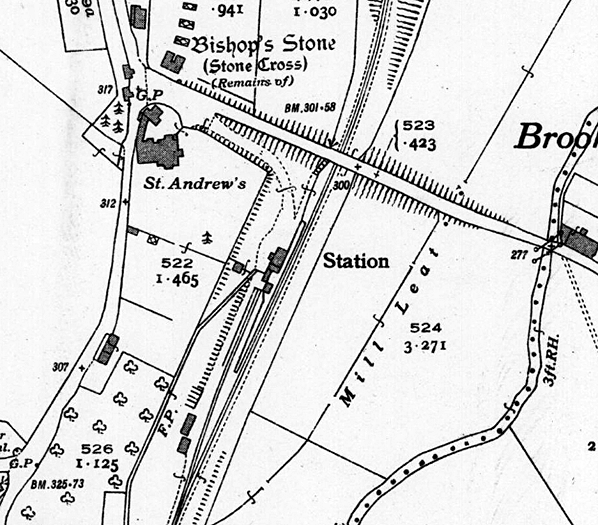 1938 1:2,500 OS map. The goods yard has been extended to serve a dock. A number of building have been added to the goods yard. Access to the station from the south along a footpath has now been provided as have steps down from the road ajacent to the bridge. 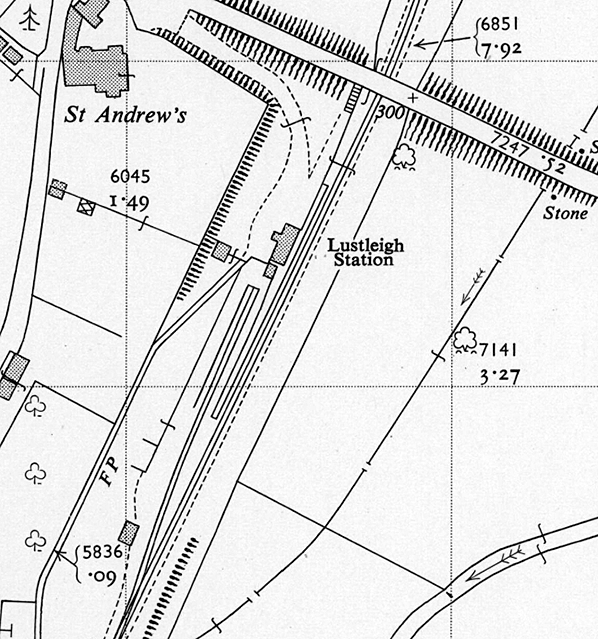 1958 1:2,500 OS map. The station is named for the first time. One of the yard buildings has gone and what is assumed to be a coal bin has been provided. Brookfield Road remains un-named on this map.
old5.jpg) Lustleigh Station c.1905
Copyright photo from John Alsop collection 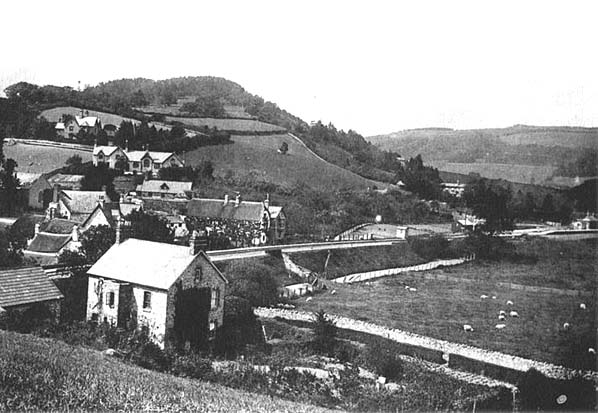 Lustleigh village in 1907, the station can be seen far right
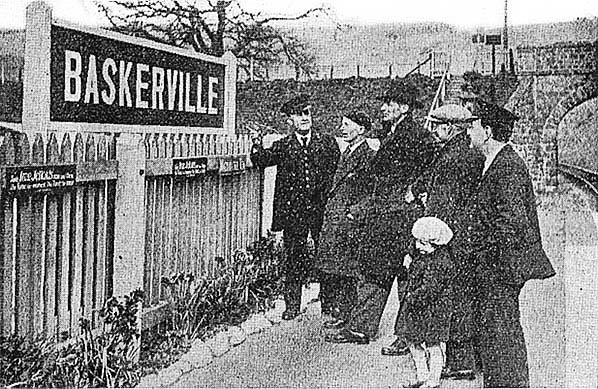 In 1931 the station was briefly renamed Baskerville for the film Hound of the Baskervilles.
old7.jpg) Lustleigh Station c.1910. The strip of land to the left of the line was purchased by the GWR for a possible loop line; it became the station garden.
Copyright photo from Paul Laming collection old6.jpg) Lustleigh Station in June 1921. The strip of land to the left of the line was purchased by the GWR for a possible loop line; it became the station garden.
Copyright photo from John Alsop collection 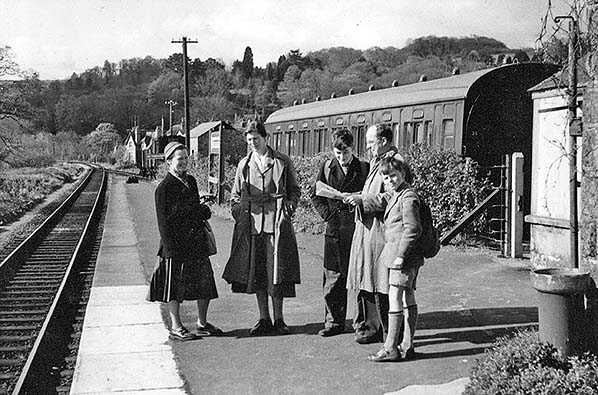
The Murray-Rust family on a camping coach holiday at Lustleigfh station in April 1957. The camping coach is seen on the right in the dock.
Photo by David Murray-Rust 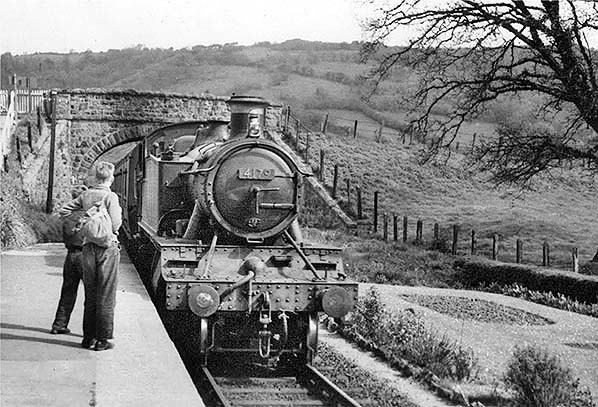
The Murray-Rust children stand on the platform as the brnch passenger train 4179 is a Collett 2-6-2T built at Swindon in 1949. and at this time allocated to Newton Abbot shed. She was withdrawn on 28 February 1965 from Tyseley shed after only 16 years and scrapped at Cohens in Kingsbury in October that year.
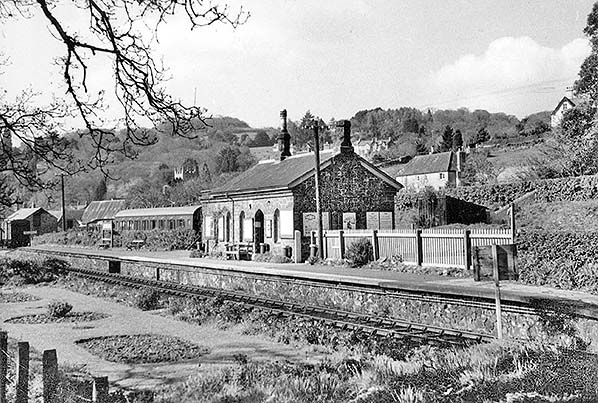 General view of Lustleigh station in April 1957. The station garden has been prepared
for spring planting. A camping coach is seen in the dock. Photo by David Murray-Rust
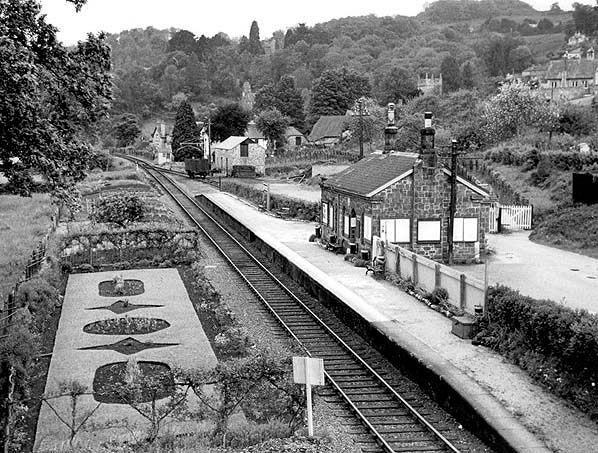 Lustleigh Station in the 1950's. Note the goods shed and loading gauge. The strip of land to the left of the line was purchased by the GWR for a possible loop line; it became the station garden.
Photo by Richard Gee 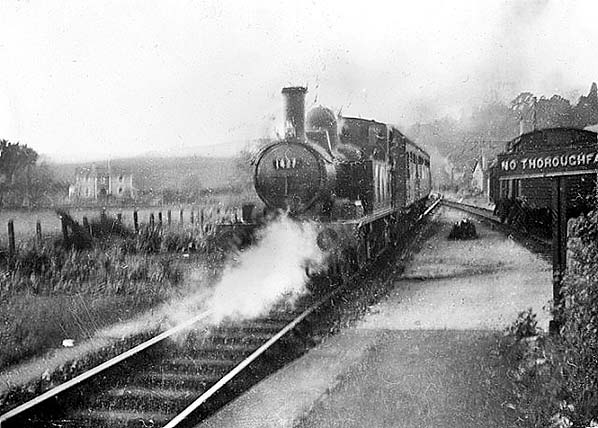
The branch passenger train arrives at Lustleigh statiion in April 1957 hauled by No 1427, a Collett CB 0-4-2T built at Swindon Works in 1933. She was allocated to Newton Abbot shed in 1948 and withdrawn from Gloucester Horton Road in Juned 1960 and cut up at Swindon Works in September that year.
Photo by Alan Murray-Rust
 Home Page Home Page
|
 One unusual feature of the station was a gravestone bearing the following: 'Beneath this stone and stretched out flat lies Jumbo, once our station cat'
One unusual feature of the station was a gravestone bearing the following: 'Beneath this stone and stretched out flat lies Jumbo, once our station cat' The Moreton & South Devon Railway Company Act was passed in 1862 for a broad gauge line from Newton Abbot to Moretonhampstead. Local people were slow to subscribe and bad weather delayed construction with the line finally opening on 4th July 1866. From the outset, the service was provided by the South Devon Railway who absorbed the local company in 1872. The bridges on the line were constructed for double track but never used as such. Goods traffic began on the line on 8th October, three months after the line opened to passengers. Initially the service was poor and traffic was sparse until the end of the century by which time the line was well used. The South Devon Railway was absorbed by the GWR in 1878 and the line was converted from broad gauge to standard gauge between 20th and 23rd May 1892.
The Moreton & South Devon Railway Company Act was passed in 1862 for a broad gauge line from Newton Abbot to Moretonhampstead. Local people were slow to subscribe and bad weather delayed construction with the line finally opening on 4th July 1866. From the outset, the service was provided by the South Devon Railway who absorbed the local company in 1872. The bridges on the line were constructed for double track but never used as such. Goods traffic began on the line on 8th October, three months after the line opened to passengers. Initially the service was poor and traffic was sparse until the end of the century by which time the line was well used. The South Devon Railway was absorbed by the GWR in 1878 and the line was converted from broad gauge to standard gauge between 20th and 23rd May 1892. British Railways claimed that the line was losing over £17,000 a year so it was announced that passenger service would be withdrawn on 2nd March 1959. This caused much local discussion. The closure of the Teign Valley line from Exeter in 1958 has hastened the demise of the line with a huge reduction in passenger traffic at the junction station of Heathfield. The last public passenger train left Moretonhampstead on 28th February 1959 ending 92 years continuous service.
British Railways claimed that the line was losing over £17,000 a year so it was announced that passenger service would be withdrawn on 2nd March 1959. This caused much local discussion. The closure of the Teign Valley line from Exeter in 1958 has hastened the demise of the line with a huge reduction in passenger traffic at the junction station of Heathfield. The last public passenger train left Moretonhampstead on 28th February 1959 ending 92 years continuous service. In 1986 construction of the Bovey bypass started following the route of the track from just North of Bovey station down through Brimley and on towards pottery bridge.
In 1986 construction of the Bovey bypass started following the route of the track from just North of Bovey station down through Brimley and on towards pottery bridge.